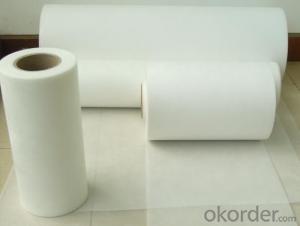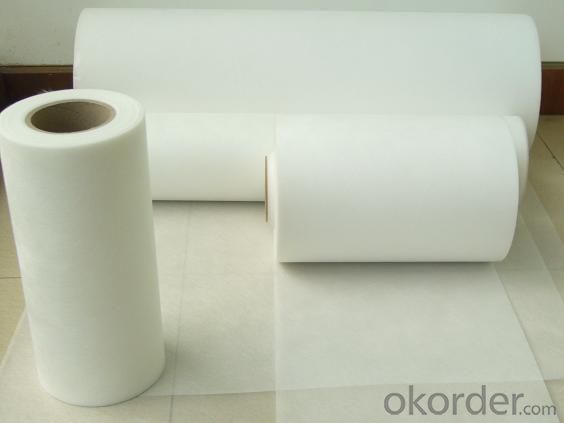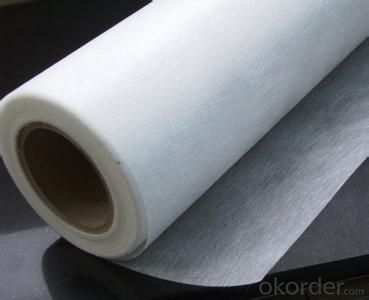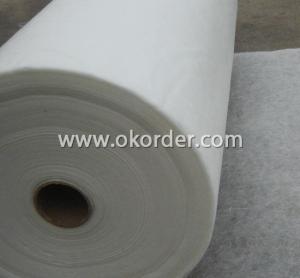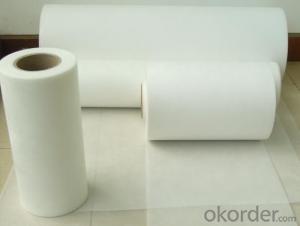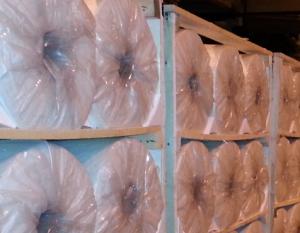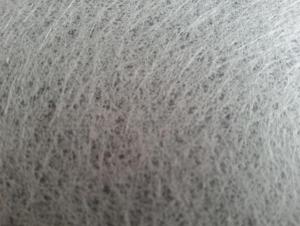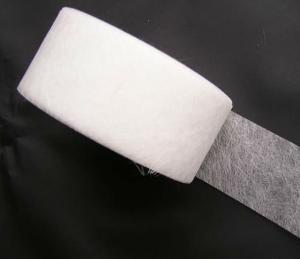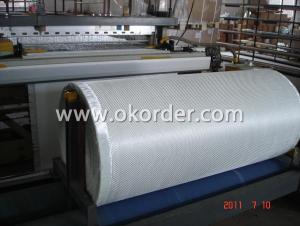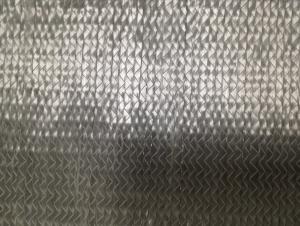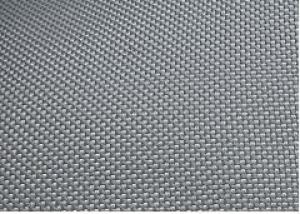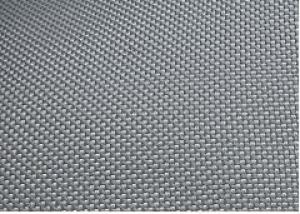Fiberglass Fabrics Surface Tissue Mat
- Loading Port:
- China Main Port
- Payment Terms:
- TT or LC
- Min Order Qty:
- 144000 m²
- Supply Capability:
- 1440000M2 Per Month m²/month
OKorder Service Pledge
OKorder Financial Service
You Might Also Like
1.Brief Introduction1.Brief Introduction
Surfacing Tissue mainly used in the surface layers of FRP products. It features even Fiber distribution, soft feel, level and smooth fiber surface, less glue content, quick resin soak and good pattern fitness. It can improve the product surface property on corrosion resistance, compressive strength, seepage resistance, and longer service life. It is also suitable for spraying; pattern pressing and other FRP pattern technology.
2.Characteristics
Fast breakdown in styrene
Fiber dispersed evenly
Low binder content
Superior acid corrosion resistance
3.Specifications
Item | Unit | Specification |
Area Weight | g/m2 | 30+/-3 |
Binder Content | % | 6-9 |
Tensile Strength MD | N/125px | ≥35 |
Soaking time | S | ≤10 |
Moisture content | % | ≤0.5 |
Width length
| mm
| 1270
|
Roll Diameter
| m | 300
|
Special specification can be produce according to customer requirements.
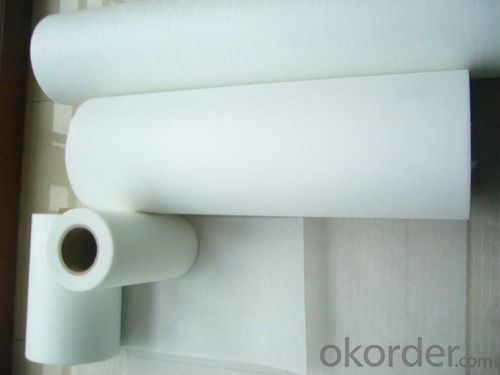
4.FAQ
a.Package
Each Surface Tissue is wound onto a paper tube which has an inside diameter of 76mm and the mat roll has a diameter of 330mm. The mat roll is wrapped up with plastic film,and then packed in a cardboard box or wrapped up with kraft paper. The rolls can be vertically or horizontally placed. For transportation, the rolls can be loaded into a cantainer directly or on pallets.
- Q: Can fiberglass fabric be used for heat-resistant curtains?
- Yes, fiberglass fabric can be used for heat-resistant curtains. Fiberglass is known for its excellent heat resistance properties, as it can withstand high temperatures without melting or burning. It is a common choice for applications that require fire resistance, such as curtains used in industrial settings or near fire hazards. Fiberglass fabric is non-combustible and can provide insulation against heat, making it a suitable material for curtains that need to withstand high temperatures.
- Q: Can fiberglass fabric be used in marine applications?
- Fiberglass fabric has a wide range of uses in the marine industry. Its strength, durability, and resistance to water and corrosion make it a versatile material for boat building and repair. The fabric can be employed to reinforce the hull, decks, and other structural components of a boat, providing added stability and strength. Moreover, it is commonly utilized in the construction of boat interiors, like cabinetry and seating, as it can be easily molded and shaped to meet specific design requirements. Additionally, fiberglass fabric is frequently employed in boat maintenance and repair to patch and reinforce damaged areas. Overall, fiberglass fabric is highly favored in marine applications due to its exceptional performance in the marine environment.
- Q: What are the different fiberglass fabric weaves for fire resistance?
- Fire-resistant fiberglass fabric is available in several different weaves, each designed to enhance its ability to withstand high temperatures and prevent the spread of fire. Some commonly used weaves for fire resistance include: 1. Satin Weave: This weave is tightly woven, providing excellent strength and fire resistance. Multiple warp yarns float over several weft yarns, creating a dense and durable fabric. 2. Twill Weave: Known for its diagonal pattern, twill weave offers good flexibility and thermal resistance. Warp and weft yarns are staggered in their interlacing, making it suitable for applications requiring fire protection. 3. Plain Weave: The simplest and most common weave, plain weave features a balanced and uniform fabric with a simple over-under interlacing of yarns. While not as strong as satin or twill weaves, it still offers decent fire resistance. 4. Basket Weave: Basket weave has a crisscross pattern created by multiple warp and weft yarns weaving over and under each other in a regular sequence. This weave provides a robust and fire-resistant fabric, often used in high-temperature applications. 5. Leno Weave: Leno weave has an open, grid-like structure created by crossing warp yarns over weft yarns in pairs. It offers good breathability and fire resistance, making it suitable for industrial applications requiring ventilation and heat resistance. Choosing the appropriate fiberglass fabric weave for fire resistance depends on the specific requirements of the application. Different weaves offer varying levels of strength, flexibility, and fire resistance, so it is crucial to select the most suitable weave based on the intended use and desired level of fire protection.
- Q: Can fiberglass fabric be used for insulation in steam systems?
- Yes, fiberglass fabric can be used for insulation in steam systems. Fiberglass fabric is a popular choice for insulation in steam systems due to its excellent thermal insulation properties and resistance to high temperatures. It can effectively trap the heat produced by steam, preventing heat loss and improving energy efficiency in the system. Additionally, fiberglass fabric is lightweight, flexible, and easy to install, making it a convenient option for insulating steam pipes and equipment. Its non-combustible nature also ensures safety in steam systems. Overall, fiberglass fabric is a reliable and effective insulation material for steam systems.
- Q: Can fiberglass fabric be used for making wall coverings?
- Fiberglass fabric is an excellent choice for creating wall coverings. With its versatility and countless advantages, this material proves to be highly durable and resistant to wear and tear. This quality ensures that it will last for a long time, making it a reliable option for covering walls. Moreover, fiberglass fabric is fire-resistant, guaranteeing safety when used for wall coverings. Its ability to be easily tailored to fit any wall size or shape ensures a seamless and professional finish. Furthermore, this fabric comes in a wide variety of colors, textures, and patterns, providing endless design possibilities. In conclusion, fiberglass fabric is a practical and stylish solution for wall coverings.
- Q: What are the main characteristics and differences between CEM-3 high thermal conductivity and aluminum substrate? Which kind of board is more advantageous to make lamps and lanterns?
- High thermal conductivity CEM-3 material with high cost performance, and now only genuine, aluminum substrate counterfeit goods more, if from genuine, aluminum substrate has higher heat dissipation performance, but the price is high.
- Q: What are the different fiberglass fabric coatings for moisture resistance?
- There are several different fiberglass fabric coatings available for moisture resistance, including silicone, polyurethane, acrylic, and vinyl. These coatings create a barrier that prevents water from penetrating the fiberglass fabric, making it suitable for applications where moisture resistance is essential.
- Q: What are the different weights of fiberglass fabric?
- Fiberglass fabric, also referred to as fiberglass cloth, can be found in a variety of weights or thicknesses. The weight of the fabric is determined by measuring the ounces per square yard (oz/yd²) or grams per square meter (g/m²). The range of weights for fiberglass fabric typically spans from 3 oz/yd² (102 g/m²) to 50 oz/yd² (1695 g/m²). The weight of the fiberglass fabric plays a significant role in determining its strength, durability, and suitable applications. For applications that require flexibility, such as boat building, surfboard manufacturing, and automotive parts, lighter weight fiberglass fabrics (3-6 oz/yd² or 102-204 g/m²) are commonly used. These fabrics are also appropriate for repairs and smaller projects. Medium-weight fiberglass fabrics (7-20 oz/yd² or 238-680 g/m²) are often chosen for general-purpose applications like laminating, molding, and reinforcing structures. They offer a good balance between strength and flexibility, making them well-suited for a wide range of projects, including composite manufacturing, construction, and aerospace applications. On the other hand, heavier weight fiberglass fabrics (21-50 oz/yd² or 714-1695 g/m²) are employed in applications that require exceptional strength and rigidity. These fabrics are frequently used in industries such as marine, wind energy, and infrastructure, where materials with high-strength properties are necessary to withstand intense conditions and structural loads. It's worth noting that the specific weight of fiberglass fabric may vary depending on the manufacturer and the intended application. Therefore, it is always advisable to consult the product specifications provided by the manufacturer to ensure the appropriate weight is selected for a specific project.
- Q: Can fiberglass fabric be used for reinforcement in underground storage tanks?
- Indeed, reinforcement in underground storage tanks can be achieved through the utilization of fiberglass fabric. Renowned for its exceptional corrosion resistance and high strength-to-weight ratio, fiberglass fabric emerges as an optimal selection for this purpose. The incorporation of fiberglass fabric not only enhances the structural integrity of the tank but also mitigates the risk of potential failures or leaks. Additionally, the ease of handling and installation of fiberglass fabric renders it a practical and cost-efficient solution for reinforcing underground storage tanks.
- Q: How to distinguish carbon fishing rod?
- Carbon poles have electricity proof signs, glass steel poles do not have.
Send your message to us
Fiberglass Fabrics Surface Tissue Mat
- Loading Port:
- China Main Port
- Payment Terms:
- TT or LC
- Min Order Qty:
- 144000 m²
- Supply Capability:
- 1440000M2 Per Month m²/month
OKorder Service Pledge
OKorder Financial Service
Similar products
Hot products
Hot Searches
Related keywords
